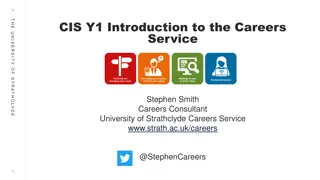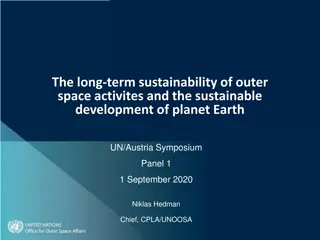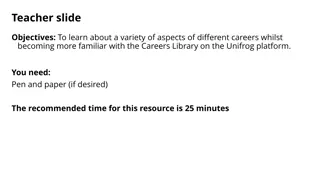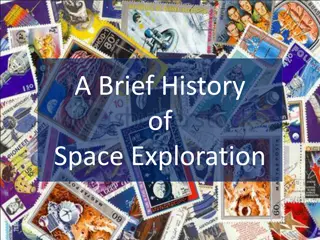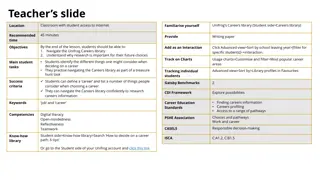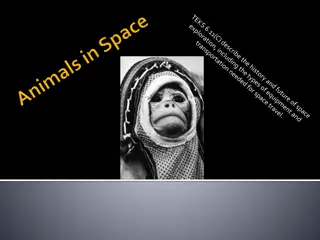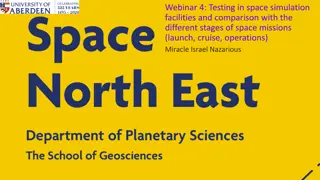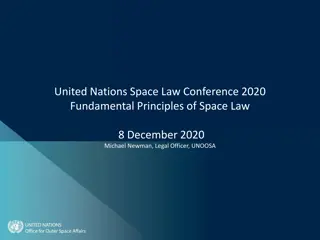Space Careers Wayfinder
Exploring the numerous hazards and challenges faced by crew members in deep space, from launch pad risks to microgravity effects. Learn how these risks are mitigated to ensure the safety and well-being of astronauts on long-duration missions.
Download Presentation

Please find below an Image/Link to download the presentation.
The content on the website is provided AS IS for your information and personal use only. It may not be sold, licensed, or shared on other websites without obtaining consent from the author.If you encounter any issues during the download, it is possible that the publisher has removed the file from their server.
You are allowed to download the files provided on this website for personal or commercial use, subject to the condition that they are used lawfully. All files are the property of their respective owners.
The content on the website is provided AS IS for your information and personal use only. It may not be sold, licensed, or shared on other websites without obtaining consent from the author.
E N D
Presentation Transcript
STUDENT RESOURCE Space Careers Wayfinder Humans in Deep Space Background From the second a crew enters a space craft they are faced with countless hazards and challenges. Even before the craft leaves the Earth s surface, they find themselves atop huge cylinders filled with highly flammable fuels, typically around 400 000 kilograms or 300 000 litres. As the craft accelerates to a top speed in excess of 40 000 km/h crew members experience a gravitational force around 3 G, this is 3 times the force normally felt on the earth s surface. Once off the ground the crew face higher levels of radiation, the effects of microgravity, hostile space environments etc. The task 1. Use the internet and other sources to complete the table on the next page identifying the hazards and challenges faced by a crew in deep space. These might have physiological and psychological effects. Describe how the risks are minimised. https://www.youtube.com/watch?v=TZkuQUCUYgM 1 HUMANS IN DEEP SPACE STUDENT RESOURCE
Hazard/Challenge Effect/Impact Mitigation! Launch pad potential explosion/fire Fatality, critical or severe injury. Mission abort protocol. Launch pad water deluge systems. Radiation Forecasting the Sun s solar energetic particle ejections. Magnetic shields. Reduced flow of blood to the eyes. Gravity suit which contains an air bladder. Air bladder inflates preventing blood pooling in the feet and legs. Reduced flow of blood to the head with possible blackout. Collision with other objects in space Fatality, critical or severe injury. Microgravity Aerobic and resistive exercise. Pressure cuffs/lower body negative pressure suit. Hostile environment Air drawn from lungs causing suffocation, water in the body would boil with swelling of body tissue. (Temperature and vacuum in deep space) Isolation Psychological screening and rigorous assessment including Temperament Structure Scale (TSS) and a NEO Personality Inventory- Revised (NEO PI-R) Intensive training in space analogue environments. Injury, illness, possible fatality. Training SMART medical systems including telemedicine. Flight surgeon who overseas health care and medical training of crew. And conducts weekly private medical conference with each crew member. Water and food Starvation, dehydration potentially fatal consequences. Breathable air and essential items Initially liquid oxygen in tanks eventually splitting water into hydrogen and oxygen, air filtration system. Exercise equipment etc. Personal hygiene and bodily functions Dental caries, unpleasant odours, bacterial infections Life support systems fail, means of manoeuvring space craft lost. Solar panels, batteries, fuel cells. Navigation Spacecraft and crew lost indefinitely resulting in fatality, collision with another object. Communication Deep Space Networks, development of optical communication systems using laser technology. 2 HUMANS IN DEEP SPACE STUDENT RESOURCE SPACE CAREERS WAYFINDER IS A COLLABORATION BETWEEN THE CSIRO AND THE AUSTRALIAN NATIONAL UNIVERSITY
STUDENT RESOURCE Space Careers Wayfinder Identify and label effects of prolonged space travel on the human body 2. Identify the major organs/systems of the body which are affected by long term space flight. Use the internet to add images for the organ/system or sketch them on the body on the next page. Include the likely impact on the organ/system from long term space flight. 3 EFFECTS OF PROLONGED SPACE TRAVEL ON THE HUMAN BODY STUDENT RESOURCE
4 EFFECTS OF PROLONGED SPACE TRAVEL ON THE HUMAN BODY STUDENT RESOURCE SPACE CAREERS WAYFINDER IS A COLLABORATION BETWEEN THE CSIRO AND THE AUSTRALIAN NATIONAL UNIVERSITY
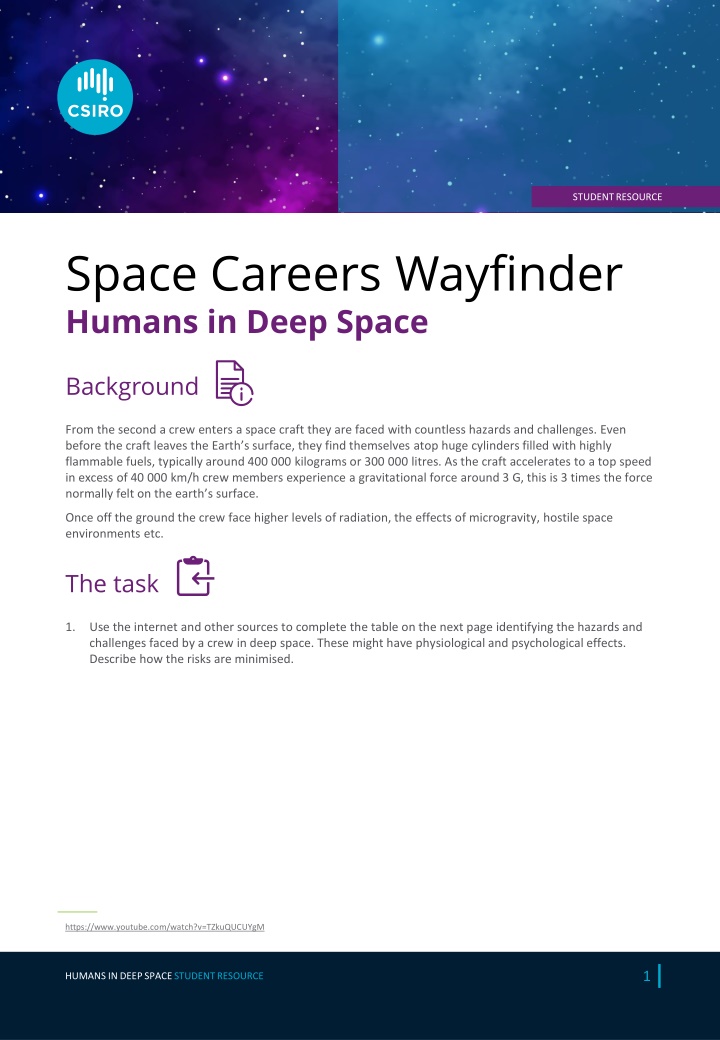


![Read⚡ebook✔[PDF] Linking the Space Shuttle and Space Stations: Early Docking Te](/thumb/21519/read-ebook-pdf-linking-the-space-shuttle-and-space-stations-early-docking-te.jpg)
![READ⚡[PDF]✔ Emerging Space Powers: The New Space Programs of Asia, the Middle Ea](/thumb/21554/read-pdf-emerging-space-powers-the-new-space-programs-of-asia-the-middle-ea.jpg)
